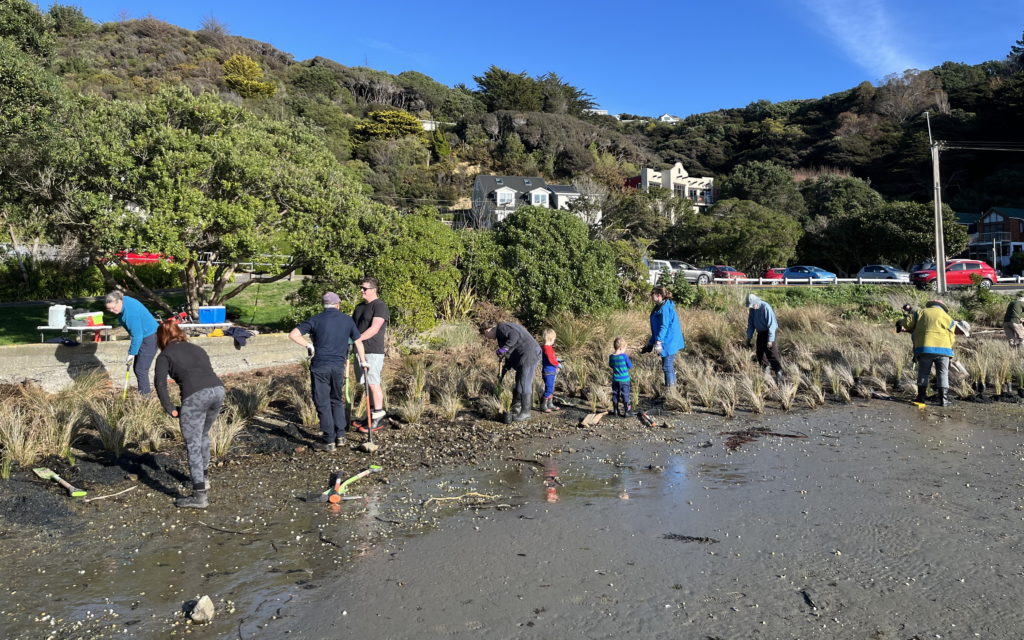The Guardians’ vision for Pāuatahanui Inlet is for a harbour that is clean, clear, teeming with life and a respected and valued resource for the community. As part of this, GOPI undertakes and supports revegetation projects all around the Inlet.
Over the past few years GOPI has successfully obtained grants that have enabled it to make a positive contribution to revegetation in and around the Inlet. Revegetation projects will continue to be strongly supported when funding opportunities arise, especially as it provides opportunities for our members and the general public to participate in hands-on activities, encouraging all to take ownership of caring for the Inlet in order to benefit the harbour ecosystem.

Opportunities to continue restoration planting around the Inlet occur from time to time and now, thanks to a generous 3-year grant from the Greater Wellington Regional Council Community Fund, the restoration of Ivey Bay will continue.
The first restoration planting project of the year was on 15 June and was a successful event supported by the many who took part on a great day.
Our report on the day is here.
We have carried out restoration planting around the Inlet over the past few years and are making quite a difference to the shoreline locations where this work has been successfully completed.
See our previous projects and what they have achieved HERE.